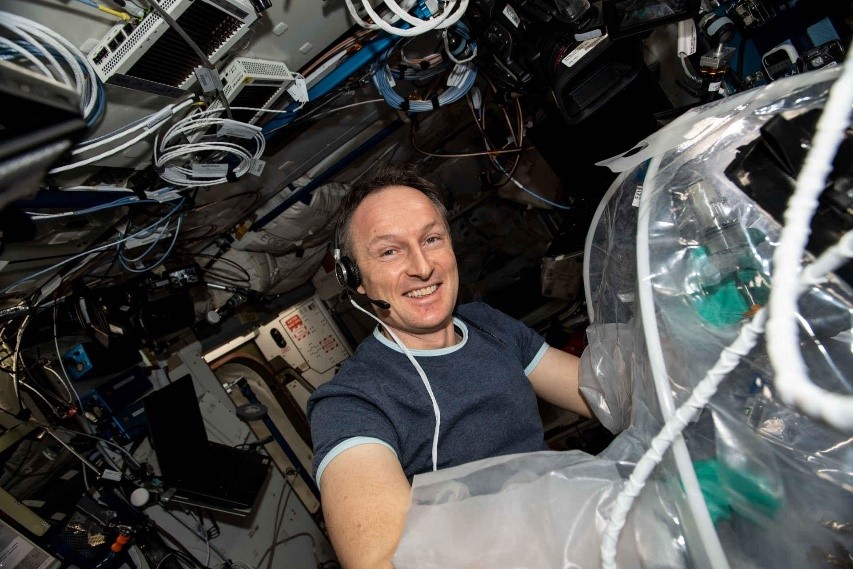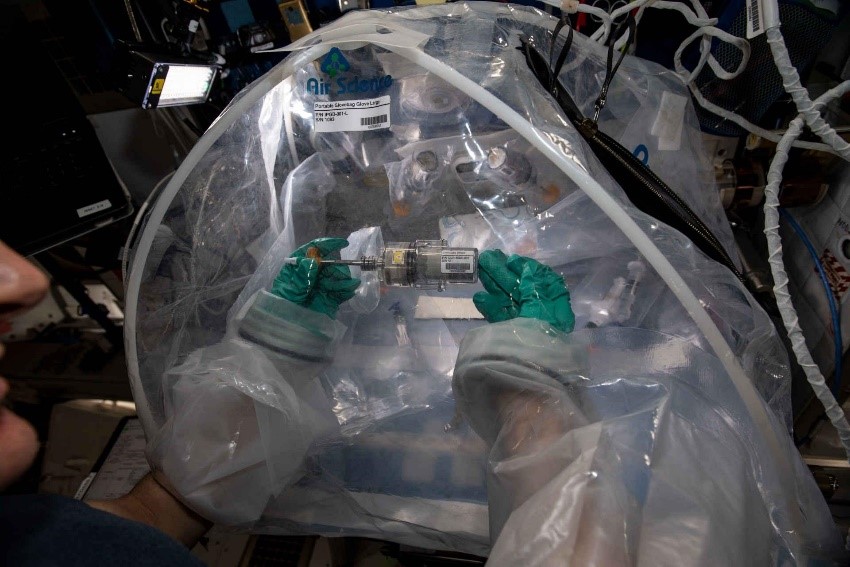Investigating concrete in space, reducing emissions on Earth
How does freshly poured concrete behave in microgravity? And how can this contribute towards environmental protection on Earth? In early February 2022, German ESA astronaut Matthias Maurer conducted research into these issues on board the International Space Station ISS.
Cement is one of humankind’s oldest building materials. Combined with water and an aggregate, it is used to produce concrete, an important modern building material. In its viscous state, concrete is a multi-layered mixture. As the water chemically binds to the cement, the ‘paste’ hardens. On Earth, this solidification is strongly influenced by gravity, which ensures that the high-density components descend and are deposited at the bottom. Air bubbles, on the other hand, rise upwards. Previous investigations on board the ISS have been limited to the solidification of pure cement.
In the Concrete Hardening project, Maurer investigated how different concrete mixtures – containing cement, sand or simulated lunar dust combined with water and various admixtures such as air-entraining agents – harden in microgravity for the first time. This research will facilitate the development of new, improved concrete mixtures that can be used as a building material for future habitats on missions to the Moon and Mars and for sustainable housing construction on Earth.
The Concrete Hardening experiment is being carried out under the scientific leadership of the DLR Institute of Materials Physics in Space. The experimental containers were developed as part of a collaboration between the universities of Cologne and Duisburg-Essen and BIOTESC in Lucerne, Switzerland.
Link:
German Aerospace Center (DLR)
Prof. Matthias Sperl · Email Matthias.Sperl@dlr.de

